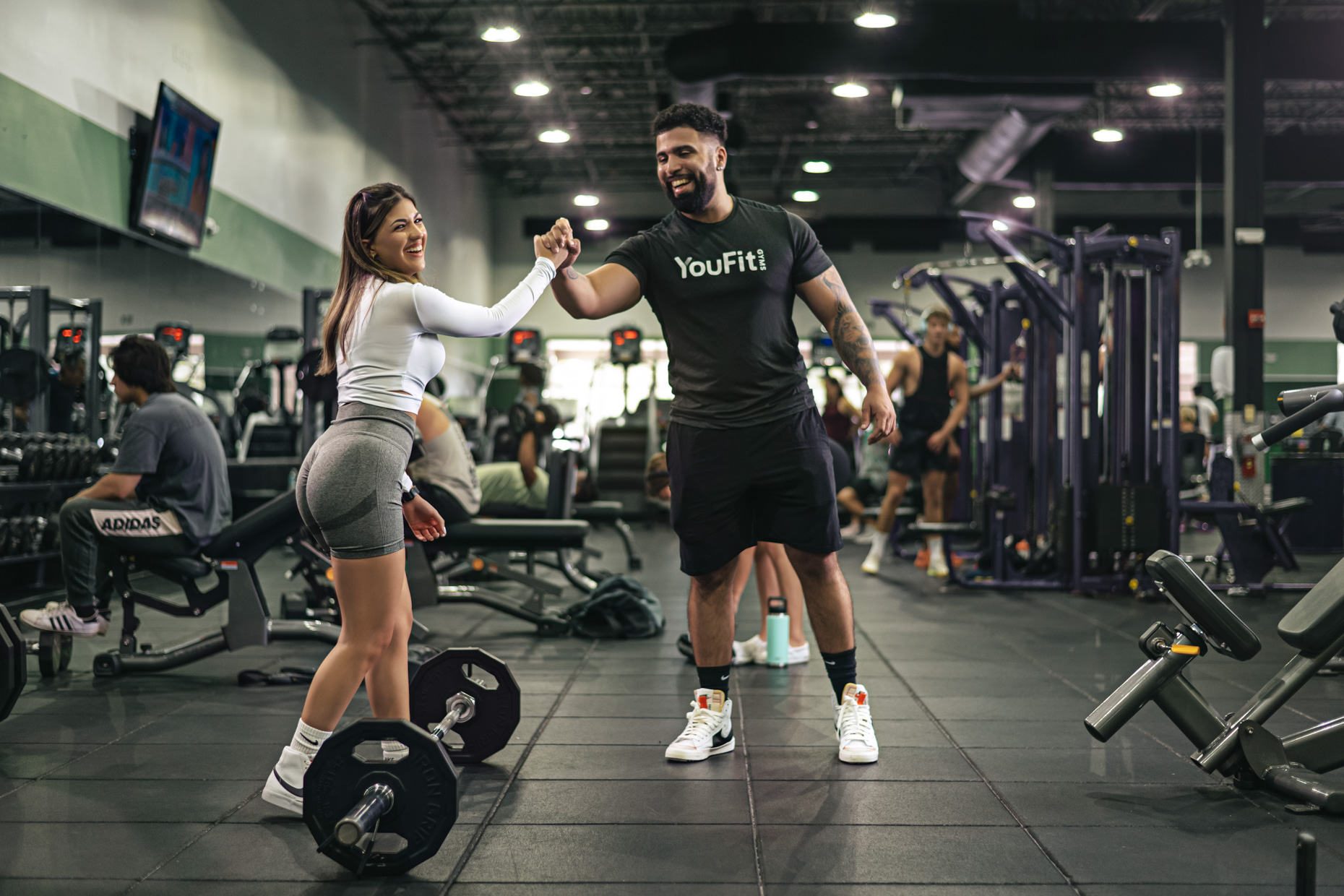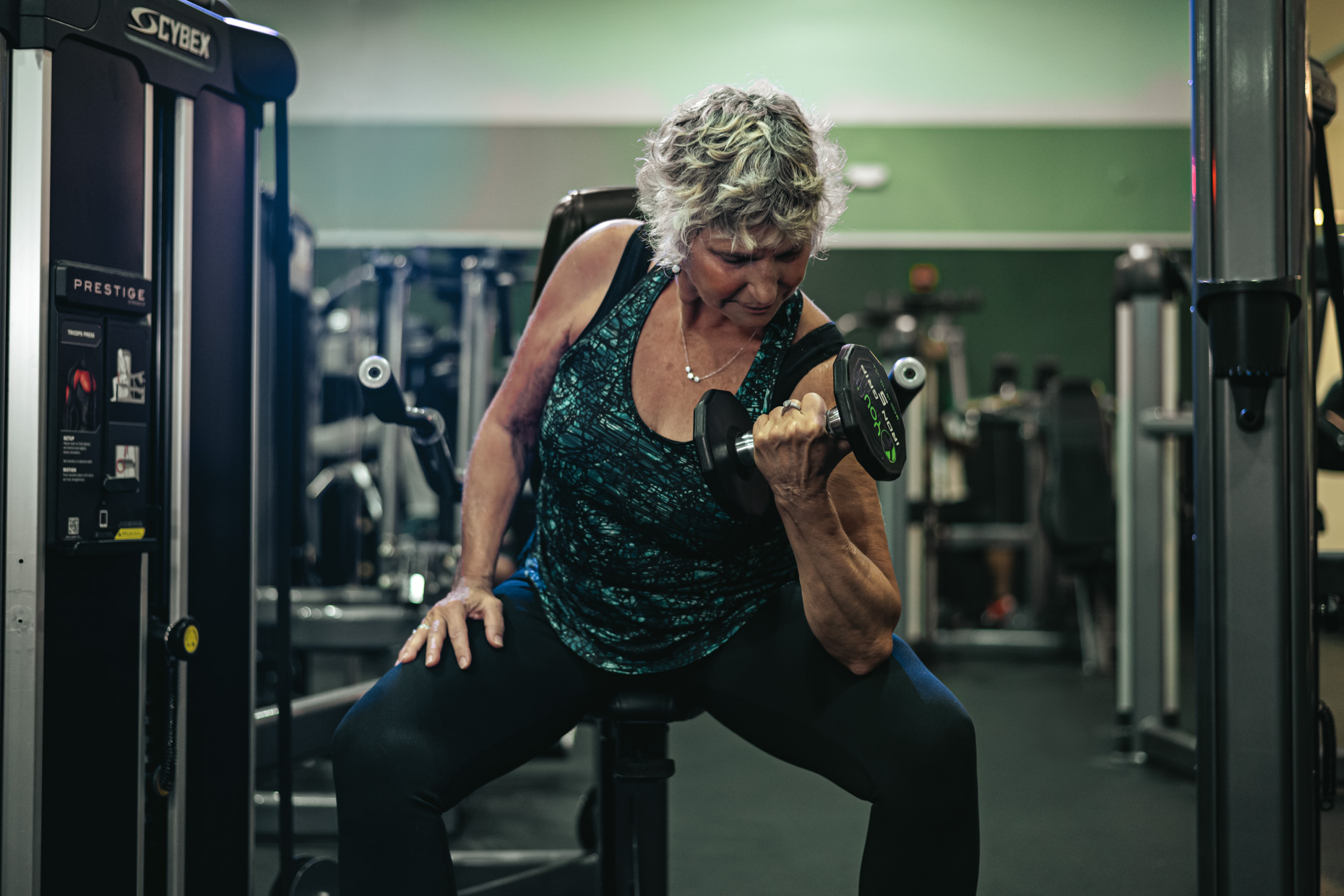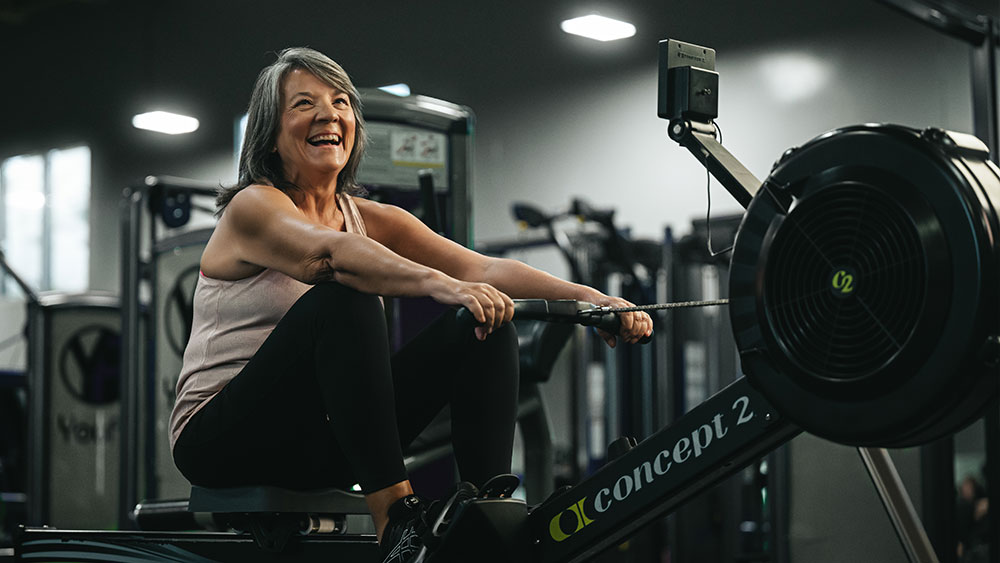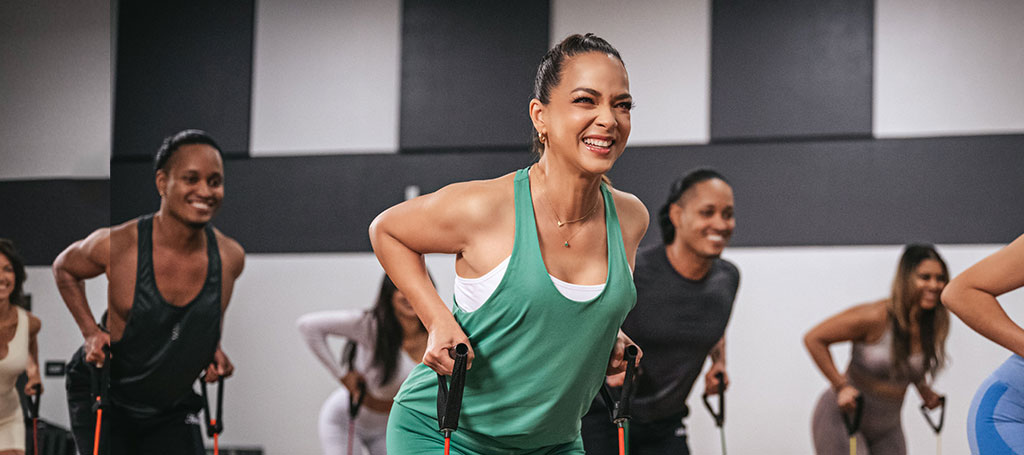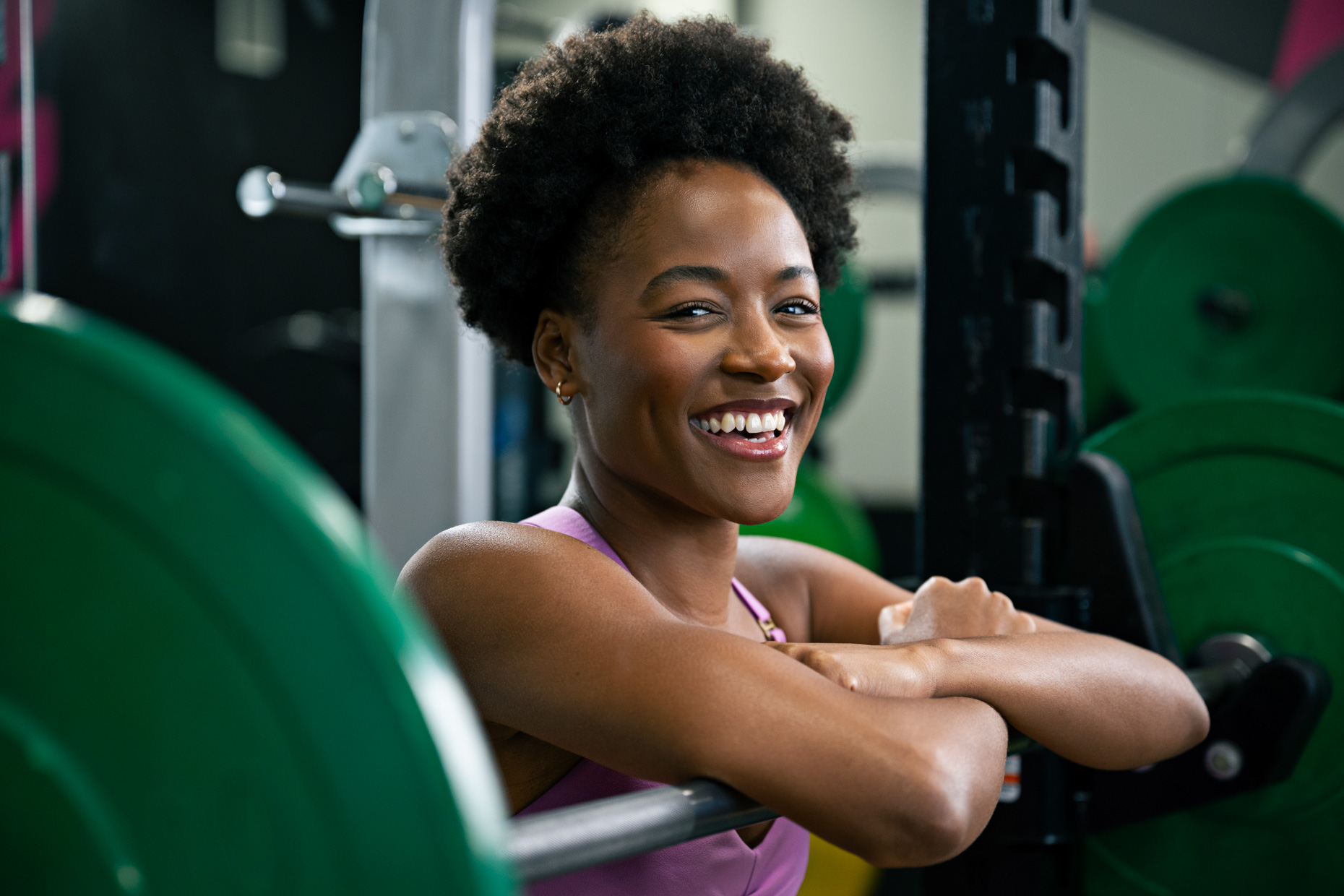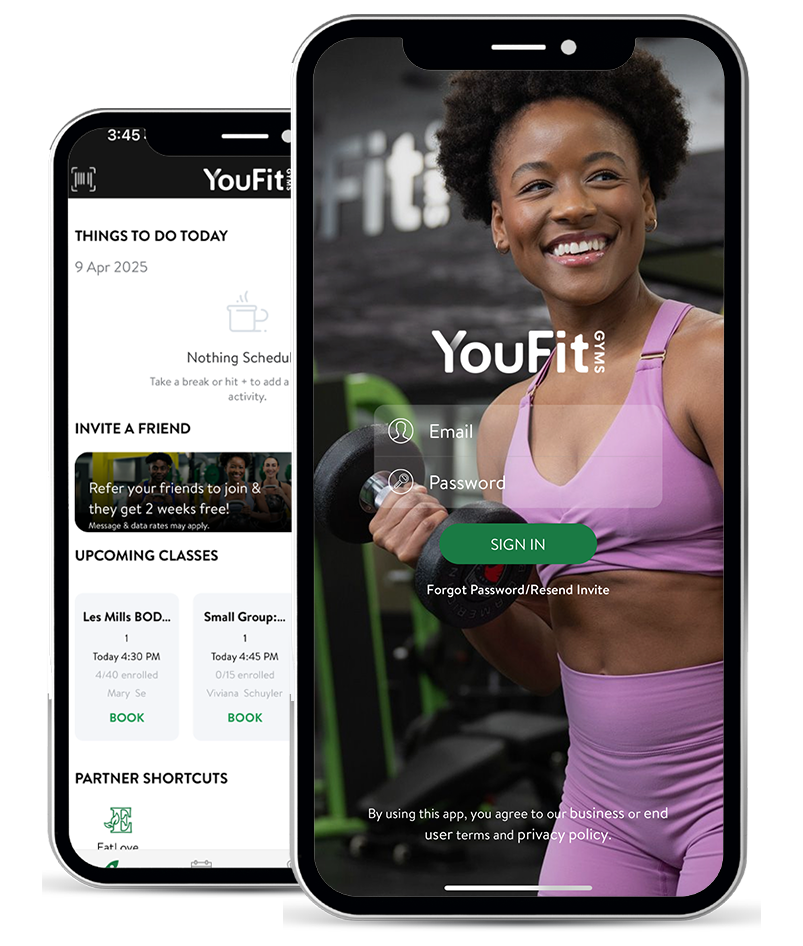We got the chance to speak with trainer Nick Patma about how he got into personal training, how he likes to start with new clients, ways to get over gym anxiety and lots more. Please enjoy as we learn a little more about the people who make YouFit such a great place to work — and work out.
Tell us a little bit about yourself, and how you got into working as a personal trainer.
I’ve been a certified personal trainer for about four or five years now — slightly off and on, if that makes sense. I’ve been with the gym industry for twelve years, which is wild to think about! I started working in the gym industry in 2012, and I’ve been with YouFit ever since.
I started at the front desk, just to get a job, but what really had me go into personal training was late 2018 or 2019. The benefits were clear — I really wanted to get into it!
And all the knowledge I’ve garnered from individuals: members coming into the gym, colleagues and trainers I’ve worked alongside, all teaching me this knowledge and expertise… I wanted to give that back to people that may have gym anxiety, or other struggles with coming into the gym. I wanted to help them really achieve their potential, help them reach their goals.
Certifications
Is there certification you had to go through before becoming a personal trainer?
There are a couple of different routes people can take with that. The most general is going to a college or university for a bachelor’s degree in exercise science. From exercise science you can go into a lot of different things: Kinesiology, Sports Nutrition… I went through an online training program called NASM, which is the National Academy of Sports Medicine; there are a lot of different ones out there. NASM is the most popular one.
The one thing I always tell people is to be sure their school is nationally accredited: there are some that sound good and may be affordable, but aren’t nationally accredited, because you can use that national certification anywhere.
Career Growth and Longevity
Also, be sure the organization also provides some way to continue your education. Once you’ve pursued a personal training certification, you want to make sure that to keep up with that — they encourage you to continue education so you can improve, learn new skills and keep up to date with new trends in fitness. It’s up to us to keep up to date and filter the information that’s out there, especially nowadays. There’s just so much information out there and it can be hard to navigate that, and so as experts, we get through that for our clientele.
New Clients
Give us an example of how to work with someone who’s never really exercised in any routine fashion. Do you see a lot of gym anxiety?
It’s important to meet you where you’re at. But there’s nothing wrong with a little trial and error, too — we don’t know until we actually try. So we’ll have you hop on to, for example, a chest press machine, just sitting back. Resistance machines are a good choice to start off for our Senior Fitizens, for example, because it’s already in a set place. All you have to do is follow the guidelines of what the machine does, increase resistance, and kind of go from there, adjusting your form as needed.
Pain of Injury or Soreness of Success?
So we keep it light, have them go through the actual entire movement and see how they feel. Have them do a few reps, and if it hurts a little bit, we want to differentiate between hurt and soreness — if it’s soreness, that’s good, but if it’s pain, then we need to step back a little.
When it comes to resistance training, especially when it comes to building muscle, the muscles you haven’t used in a while are going to wake up: there’s going to be a little bit of that uncomfortableness, especially if you haven’t used those areas in a long time.
Do you find having a standing trainer appointment motivates your clients to come in? Can you better measure their progress, and see more progress, than they might get without a trainer?
Absolutely. Most people have similar goals, but everyone’s plan is individualized based on the specific things they need. Part of what we do is to offer our expertise to help tailor an exercise program that fits your specific needs, and takes into account specific health conditions, mobility issues, and personal goals.
Gym Anxiety | First Appointment
When someone comes in, what kind of questions can they expect to answer? What do you ask them about, to get an idea of how you should proceed?
The main thing we always do first is setting the expectation. We go through a little bit of health history to see where your conditions are. A question we might ask would be, “Do you have any injuries or any ailments currently affecting you?” It could be a bad knee, bad elbow, whatever. It could just be, “It hurts when I sit down.”
So then we dive in a little bit more: “Have you had any injuries prior to that?” And so on. I can’t guarantee we’re going to fix it, but we’re going to see how we can work around it. That also means it’s not going to hurt as much, too.
Health history, heart problems, chest pain, high cholesterol, high blood pressure; diving into family history as well. We ask for any family history with chronic health conditions, diabetes, heart disease, stroke, cancer, and so on, so that we can then ask, “What’s going to help them?”
Setting Goals and Expectations
So after a few exercises, once you get the baseline, do you sit down and figure out a plan?
If everything is good to go, they sign off saying they are good to work out with us today. We go into their goals before we dive into a workout. What are they looking to do coming in here today? We get into those goals specifically — anyone can just shout out generic fitness goals!
“Why those goals, specifically? How long have you been thinking about this goal, what’s motivating it?” Deep-diving into the “why.” I’m big on finding that — the emotional tie that’s going to keep them going. I make sure we stick to that goal, but it also gives them some form of accountability. We dive into where the motivations are and we start setting up a plan.
It’s maybe been quite some time since they’ve been in. Most have never touched a dumbbell. Or maybe they’ve used it correctly, maybe they haven’t. So it’s important to see! Do you have gym anxiety? Do you know what a dumbbell is? Then we have a little bit of knowledge. As you get older, a lot of it is going to come down to modifying the exercises, to a certain degree. How do we adapt? How do we change the workout to fit where you are currently, and help you progress?
And About That Progress…
How many sessions do people need before they start seeing what they want to see?
We always recommend, if you work with a personal trainer, at least two to three times a week to start off. Especially for a brand new person, and especially if you need the training wheels on. If you hire a PT to hold your hand for it, so to speak, that’s totally fine — that’s what we want to do! We want to help out, get you started on the right footing. This gives us extra focus, which is extra time to help you with certain problems or certain areas you want to improve on.
How long is a session, generally? What happens if we show up early or stay late?
Sessions usually run for us, specifically, about 30 minutes each time. If you want to do an hour, that’s awesome. But we can get a lot done in 30 minutes, too.
When you arrive early, I love that. You can come in and knock out a little cardio to get that blood flowing. Or if they want to stay after and do something for a while, I totally encourage that. I usually say to keep it a little light, keep it simple, don’t overdo it if they stay after. But normally I would I give them some form of homework. Or I might say, “Hey, I already put you through the ringer. That’s all for today!”
If you have five to ten minutes to spare, do something light. Stretch yourself out. I’ll show you a couple of different things to do during that recovery time we talked about. So you’ve got a bit of a baseline to follow for the next 4-8 weeks. We’ll usually change it out around then, just depending on where you’re at.
Training Evolution
How do you keep it interesting? Training is about repetition, but there’s a limit to what we can handle…
It doesn’t make sense for us to do a new routine every single week, especially as we’re trying to build a habit. Habits have to be built by doing stuff over and over. We’ll change a few aspects here and there, with a certain exercise — maybe increase sets, increase reps, increase the weight, time, attention — there’s a lot of factors we can change, but still have the same movement.
Say, for a squat. I might have you do body weight squats to start off, on a box. You progress from that level, we might add some weight. And then within the third week, we’ll add a little bit more weight, or have you squat a little lower. You’ll see gym anxiety go down. There are a lot of different ways we can adjust as needed to get you there.
We plan realistically based on where you’re at, how important are these goals, whether you really want to achieve them. We create a kind of prescription, based on what you want to do and where you’re at… If you can only come in one day a week, it’s a good start — just to build the habit.
One day’s not going to be enough as we get further into your training. If you can only do one day for now, that’s totally fine — but we will continue to encourage you to come in more often so you can really start to see these changes.
Getting Over Gym Anxiety
What would you say to someone who’s hesitant to start going to the gym because they’ve just never done it? Someone who’s a little afraid due to lack of knowledge or maybe strength or ability, coming into this fresh?
I can totally relate to that person. Someone that’s just stepping in, out of their comfort zone. What I tell everybody is that everyone in here has a story to tell, and their own reason to come in.
Everyone starts somewhere. I was in the same place once, where never in my wildest dreams would I ever have stepped foot in the gym! I was not knowledgeable. But I was surrounded by people that were willing to help.
And that’s the beauty of it, that there are people willing to help you — that’s the beauty of the fitness community, and the reason so much gym anxiety is unfounded. We keep our arms open, because we want to encourage people to come in.

